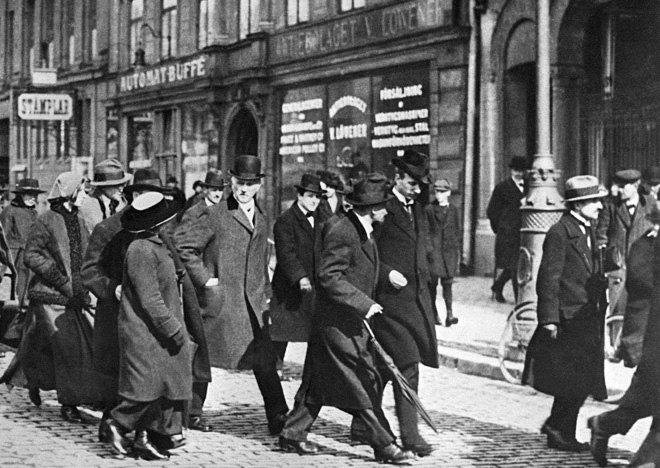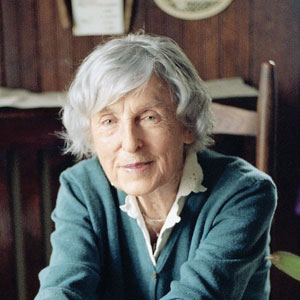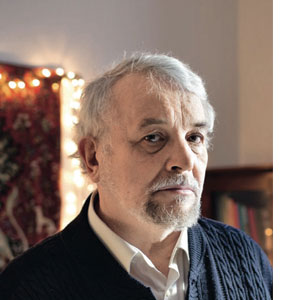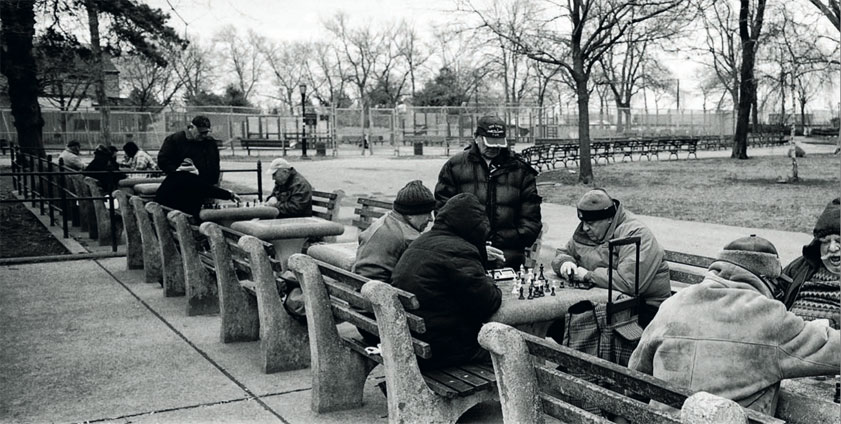Russian emigration
introduction
backstory
Contrary to popular belief, mass emigration from Russia began even before the revolution
Maria Sorokina
historian
“The first major migration flow was the labor migration of the late 19th and early 20th centuries. These were primarily national streams - Jews, Poles, Ukrainians and Germans. .... Expand > In fact, until the end of the 19th century, only Jews were allowed to travel freely, all the rest were issued a passport for only 5 years, then it had to be renewed. At the same time, even the most loyal citizens had to ask for permission to leave.
It is believed that about two million Jews left the Russian Empire during this period. There was also an emigration of ethno-professional groups and sectarians - Old Believers, Mennonites, Molokans, etc. They went mainly to the USA, many to Canada: there are still settlements of Russian Doukhobors, whom Leo Tolstoy helped to leave. Another direction of labor migration is Latin America, up to 200 thousand people left there by 1910.”
Mikhail Denisenko
demographer
“Until 1905, emigration was allowed in relation to Jews, Poles and sectarians, among whom, in addition to the Doukhobors, were the descendants of German colonists who lost their privileges in the second quarter of the 19th century. .... Expand > Cases of proper Russian (which before the revolution included Great Russians, Ukrainians and Belarusians) emigration were relatively rare - it was either political emigration, or sailors who served in the merchant fleet, seasonal workers who left to work in Germany, as well as the already mentioned sectarians.
After 1905, leaving to work was allowed, and a Russian working mass began to form in the USA, Canada, Australia and Latin America. If in 1910, according to the census, there were only 40,000 Russians in the United States, then in the next decade, more than 160,000 people arrived there.
Numerous communities have formed in the states of Pennsylvania and Illinois. True, in American statistics, the Orthodox Ukrainians of Austria-Hungary were also classified as Russians, who settled together with the Russians and went to the same churches with them. Basically, they were engaged in hard physical labor in metallurgical and automobile plants, slaughterhouses and textile factories, in mines. However, there were also nobles and raznochintsy, who for various reasons were forced to leave Russia. For example, a well-known Russian engineer, the inventor of the incandescent lamp, Alexander Lodygin, worked in the USA for a long time. The founder of the city of St. Petersburg in Florida was the Russian nobleman Pyotr Dementiev, who became a well-known businessman in exile. Trotsky and Bukharin found political asylum in the United States.
Formerly illiterate peasants, who constituted the majority in this stream, it was not easy to adapt to the high rates of labor in American industry; they often received industrial injuries, foremen and managers treated them with disdain. After the Bolshevik revolution, many lost their jobs and could not find a new one - employers saw a Bolshevik in every Russian.

Photo: ITAR-TASS
Lenin (second from right) in a group of Russian political emigrants in Stockholm, passing from Switzerland to Russia, 1917
first wave
1917 - late 1920s
It is this wave, caused by the 1917 revolution, that is traditionally called the first, and it is with it that many associate the concept of “Russian emigration”

Marina Sorokina
historian
“Strictly speaking, the stream formed after the two revolutions of 1917 and the Civil War cannot be called “emigration”. People did not choose their fate, in fact they were refugees. .... Expand > This status was officially recognized, under the League of Nations there was a commission for refugees, which was headed by Fridtjof Nansen (this is how the so-called Nansen passports appeared, which were issued to people deprived of a passport and citizenship. - BG).
At first, we went primarily to the Slavic countries - Bulgaria, the Kingdom of Serbs, Croats and Slovenes, Czechoslovakia. A small group of Russian military went to Latin America.
The Russian refugees of this wave had a rather strong branched organization. In many settlement countries, Russian scientific institutes arose to help scientists. In addition, a significant number of specialists took advantage of the established connections, left and made a brilliant career. A classic example is Sikorsky and Zworykin in the USA. A less well-known example is Elena Antipova, who went to Brazil in 1929 and actually became the founder of the Brazilian psychological and pedagogical system. And there are many such examples."
Mikhail Denisenko
demographer
“The idea of Americans about Russians as Bolsheviks and Communists was radically changed by the white emigration, shining with the names of S. Rakhmaninov and F. Chaliapin, I. Sikorsky and V. Zvorykin, P. Sorokin and V. Ipatiev. .... Expand > In terms of ethnic composition, it was heterogeneous, but these emigrants identified themselves with Russia and this, first of all, determined their nationality.
The first main flow went to countries located relatively close to Russia (Germany, Czechoslovakia, Poland). As Wrangel's army was evacuated, Istanbul, Bulgaria and Yugoslavia became major centers. The White Fleet until 1924 was based in Bizerte (Tunisia). In the future, emigrants moved further to the West, in particular to France. In the years that followed, many moved on to the US, as well as Canada and Latin America. In addition, white emigration went through the Far Eastern borders; large emigrant centers formed in Harbin and Shanghai. From there, many emigrants subsequently moved to America, Europe and Australia.
The number of this flow is estimated differently - from 1 to 3 million people. The most widely accepted estimate is 2 million people, based on Nansen passports issued. But there were also those who did not fall into the sphere of attention of organizations that helped refugees: the Volga Germans fleeing the famine of 1921–1922, Jews who fled from pogroms that resumed during the Civil War, Russians who received citizenship of states that were not part of the USSR. By the way, during the Civil War, the idea of marrying a foreigner and leaving the country became popular - foreign prisoners of war of the First World War (mainly from the former Austria-Hungary) in Russia had more than 2 million people.
In the mid-1920s, the emigration outflow noticeably weakened (the Germans continued to leave), and in the late 1920s the country's borders were closed.
second wave
1945 - early 1950s
The Second World War caused a new wave of emigration from the USSR - some left the country after the retreating German army, others, driven to concentration camps and forced labor, did not always return back

Marina Sorokina
historian
“This wave primarily consists of the so-called displaced persons (DP). These are residents of the Soviet Union and annexed territories who, as a result of World War II, left the Soviet Union for one reason or another. .... Expand > Among them were prisoners of war, collaborators, people who voluntarily decided to leave, or those who simply ended up in another country in a whirlwind of war.
The fate of the population of the occupied and non-occupied territories was decided at the Yalta Conference in 1945; what to do with Soviet citizens, the allies left Stalin to decide, and he sought to return everyone to the USSR. For several years, large groups of DP lived in special camps in the American, British and French zones of occupation; in most cases they were sent back to the USSR. Moreover, the Allies handed over to the Soviet side not only Soviet citizens, but also former Russians who had long had foreign citizenship, emigrants - such as, for example, the Cossacks in Lienz (in 1945, the British occupation forces handed over to the USSR several thousand Cossacks who lived in the vicinity of the city of Lienz. - BG). In the USSR they were repressed.
The bulk of those who avoided returning to the Soviet Union went to the United States and Latin America. A large number of Soviet scientists from the Soviet Union left for the United States - they were helped, in particular, by the famous Tolstovsky Foundation, created by Alexandra Lvovna Tolstaya. And many of those whom the international authorities classified as collaborators left for Latin America - because of this, the Soviet Union subsequently had difficult relations with the countries of this region.
Mikhail Denisenko
demographer
“The emigration of the Second World War is very diverse in terms of ethnic composition and other characteristics. Volksdeutsche (Russian Germans), who lived in the territory of the Soviet Union occupied by the Germans, left with the Germans of their own free will. .... Expand > Naturally, those who actively collaborated with the German occupation authorities, primarily policemen and soldiers and officers of military units created by the Nazis, sought to hide. Finally, not all of the Soviet prisoners of war and civilians deported to Germany wanted to return to their homeland - some were afraid of reprisals, others managed to create families. In order to avoid forced repatriation and obtain refugee status, some Soviet citizens changed their documents and surnames, hiding their origin.
Numerical estimates of the emigration wave caused by World War II are very approximate. The most probable is in the interval from 700 thousand to 1 million people. More than half of them were the peoples of the Baltic states, a quarter were Germans, a fifth were Ukrainians, and only 5% were Russians.”
third wave
early 1960s - late 1980s
Few managed to get over the Iron Curtain - Jews and Germans were released first of all, if the political situation was favorable for them. At the same time, dissidents began to be expelled

Marina Sorokina
historian
“This stream is often called Jewish. After the Second World War, with the active assistance of the USSR and Stalin, the State of Israel was created. By this point, Soviet Jews had already survived the terror of the 1930s and the struggle with the cosmopolitans of the late 1940s, so when the opportunity to leave emerged during the thaw, many took it. .... Expand > At the same time, part of the emigrants did not stay in Israel, but went further - mainly to the USA; it was then that the expression "a Jew is a means of transportation" appeared.
These were no longer refugees, but people who really wanted to leave the country: they applied to leave, they were refused, they applied again and again - and finally they were released. This wave became one of the sources of political dissidence - a person was denied the right to choose a country of life, one of the basic human rights. Many sold all the furniture, quit their jobs - and when they refused to let them out, they went on strikes and hunger strikes in empty apartments, attracting the attention of the media, the Israeli embassy, and sympathetic Western journalists.
Jews constituted the overwhelming majority in this stream. It was they who had a diaspora abroad, ready to support new members. The rest were more difficult. Life in exile is bitter bread. Since the beginning of the 20th century, different people have found themselves abroad with very different ideas about the future: some sat on their suitcases and waited for their return to Russia, others tried to adapt. Many were completely unexpectedly thrown out of life, someone managed to get a job, someone could not. The princes drove a taxi and starred in extras. Back in the 1930s in France, a significant layer of the Russian emigration elite was literally entangled in the intelligence network of the Soviet NKVD. Despite the fact that by the period described the situation had changed, intra-diaspora relations remained very tense.”
Mikhail Denisenko
demographer
“The Iron Curtain came down with the start of the Cold War. The number of people leaving the USSR during the year was, as a rule, small. So, in 1986, a little more than 2 thousand people left for Germany, about 300 for Israel. .... Expand > But in some years, a change in the foreign policy situation led to a surge - emigration issues often acted as a bargaining chip in various negotiations between the governments of the USSR and the USA or the USSR and Germany. Thanks to this, after the Six-Day War from 1968 to 1974, Israel received almost 100,000 migrants from the Soviet Union. Subsequent restrictions led to a sharp reduction in this flow. For this reason, the United States adopted the Jackson-Vanik amendment in 1974, which was repealed this fall (the amendment to the American Trade Law restricted trade with countries that violate the right of their citizens to emigrate, and primarily concerned the USSR. - BG).
If we take into account the small outflow of people to Germany and Israel that existed in the 1950s, it turns out that in total this wave involved more than 500 thousand people. Its ethnic composition was formed not only by Jews and Germans, who were in the majority, but also by representatives of other nations with their own statehood (Greeks, Poles, Finns, Spaniards).
The second, smaller flow consisted of those who fled the Soviet Union during business trips or tours or were forcibly expelled from the country. The third stream was formed by migrants for family reasons - wives and children of foreign citizens, they were mainly sent to third world countries.
fourth wave
since the late 1980s
After the end of the Cold War, everyone who could one way or another get settled abroad poured out of the country - through repatriation programs, through refugee status, or in some other way. By zero, this wave has noticeably dried up


Mikhail Denisenko
demographer
“What is traditionally called the fourth wave of emigration, I would divide into two separate flows: one - from 1987 to the early 2000s, the second - the 2000s. .... Expand >
The beginning of the first flow is associated with changes in Soviet legislation adopted in 1986–1987, which made it easier for ethnic migrants to travel abroad. From 1987 to 1995, the average annual number of migrants from the territory of the Russian Federation increased from 10,000 to 115,000 people; more than 1.5 million left Russia between 1987 and 2002. This migration flow had a clear geographical component: from 90 to 95% of all migrants went to Germany, Israel and the USA. This direction was set by the presence of generous repatriation programs in the first two countries and programs for the reception of refugees and scientists from the former USSR in the latter.
Since the mid-1990s, in Europe and the United States, the policy regarding emigration from the former USSR began to change. Opportunities for emigrants to obtain refugee status have been sharply reduced. In Germany, the program for the admission of ethnic Germans began to be curtailed (by the beginning of the 2000s, the quota for their admission was reduced to 100 thousand people); the requirements for repatriates in terms of the level of knowledge of the German language have noticeably increased. In addition, the potential for ethnic emigration has been exhausted. As a result, the outflow of the population for permanent residence abroad has decreased.
In the 2000s, a new stage in the history of Russian emigration began. Currently, this is normal economic emigration, which is subject to global economic trends and is regulated by the laws of those countries that receive migrants. The political component no longer plays a special role. Russian citizens seeking to emigrate to developed countries have no advantages over potential migrants from other countries. They have to prove their professional competence to the immigration services of foreign states, demonstrate knowledge of foreign languages and integration opportunities.
Largely due to tough selection and competition, the Russian immigrant community is becoming younger. Emigrants from Russia living in Europe and North America are distinguished by a high level of education. Women predominate among emigrants, which is explained by the higher frequency of marriage with foreigners compared to men.
In total, the number of emigrants from Russia from 2003 to 2010 exceeded 500 thousand people. At the same time, the geography of Russian emigration has noticeably expanded. Against the backdrop of declining flows to Israel and Germany, the importance of Canada, Spain, France, Great Britain and some other countries has increased. It should be noted that the process of globalization and new communication technologies have significantly increased the variety of forms of migration movements, due to which “emigration forever” has become a very conditional concept.”
Marina Sorokina
historian
“The 20th century was exceptionally active in terms of migrations. Now the situation has changed. Take Europe - it no longer has national borders. .... Expand > If earlier cosmopolitanism was the lot of singles, now it is an absolutely natural psychological and civil state of a person. We can not say that in the late 1980s - early 1990s. a new wave of emigration began in Russia, but that the country entered a new open world. This has nothing to do with the flows of Russian emigration that we spoke about above.”
photo story
pearl by the sea

In the 70s, Russian emigrants began to actively settle in the New York area of Brighton Beach.
He became the main symbol of the third wave of emigration, a time machine that is still able to transfer anyone who wishes to an imaginary Odessa of the Brezhnev times. Brighton "pounds" and "slash", concerts by Mikhail Zadornov and pensioners walking along the "boardwalk" - all this, obviously, is not long, and the old-timers complain that Brighton is not the same anymore. Photographer Mikhail Fridman (Salt Images) observed the modern life of Brighton Beach




